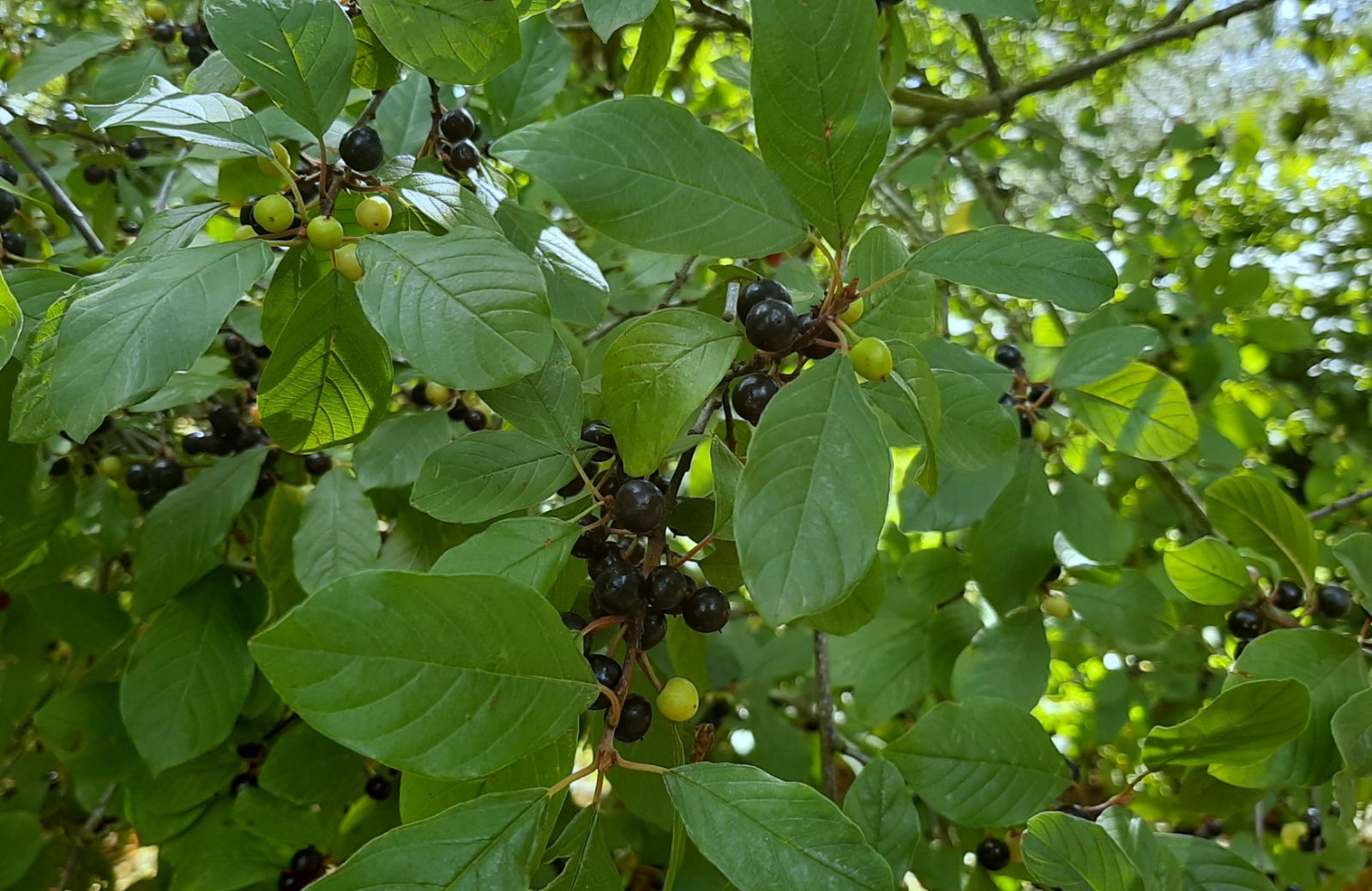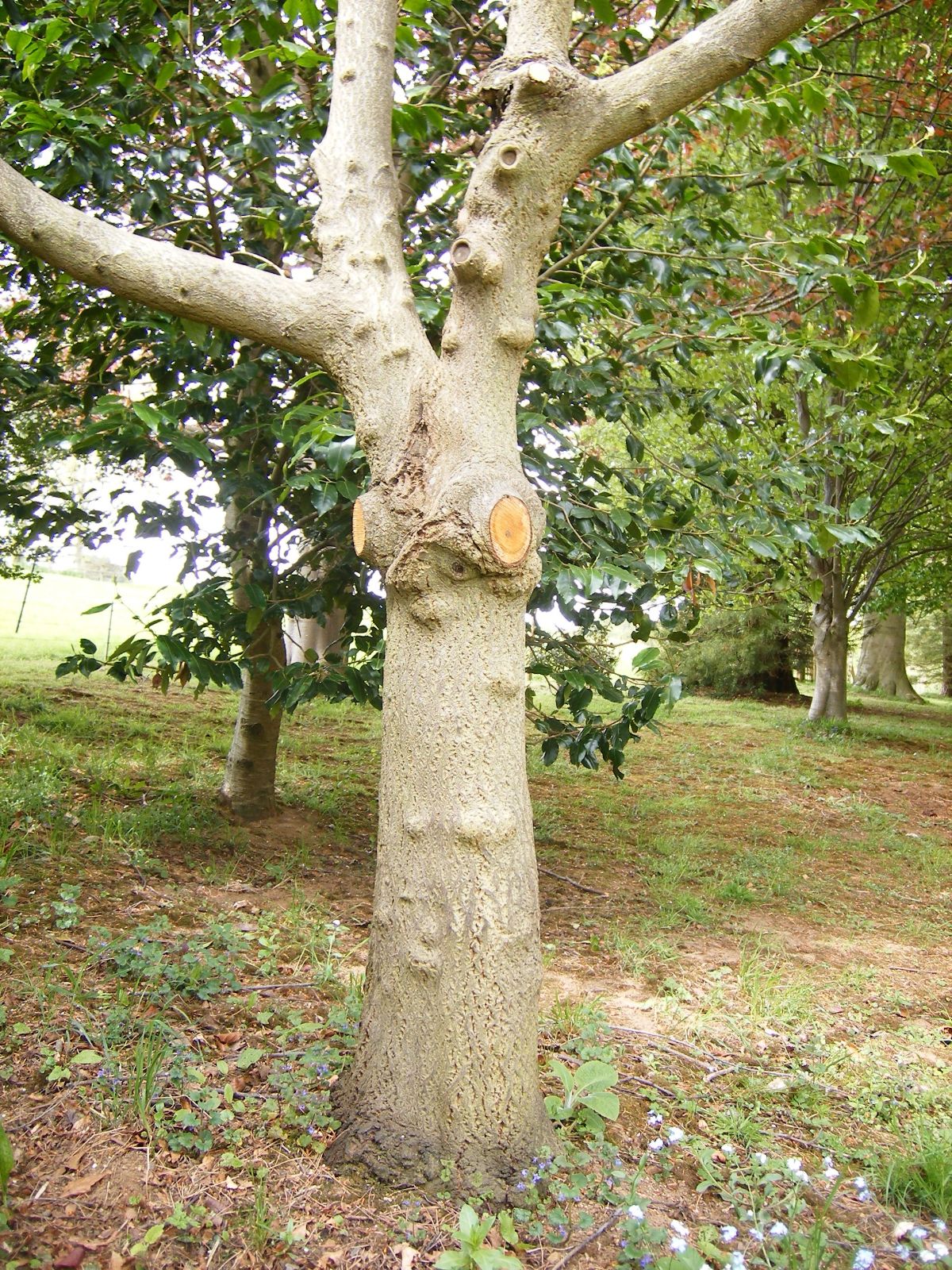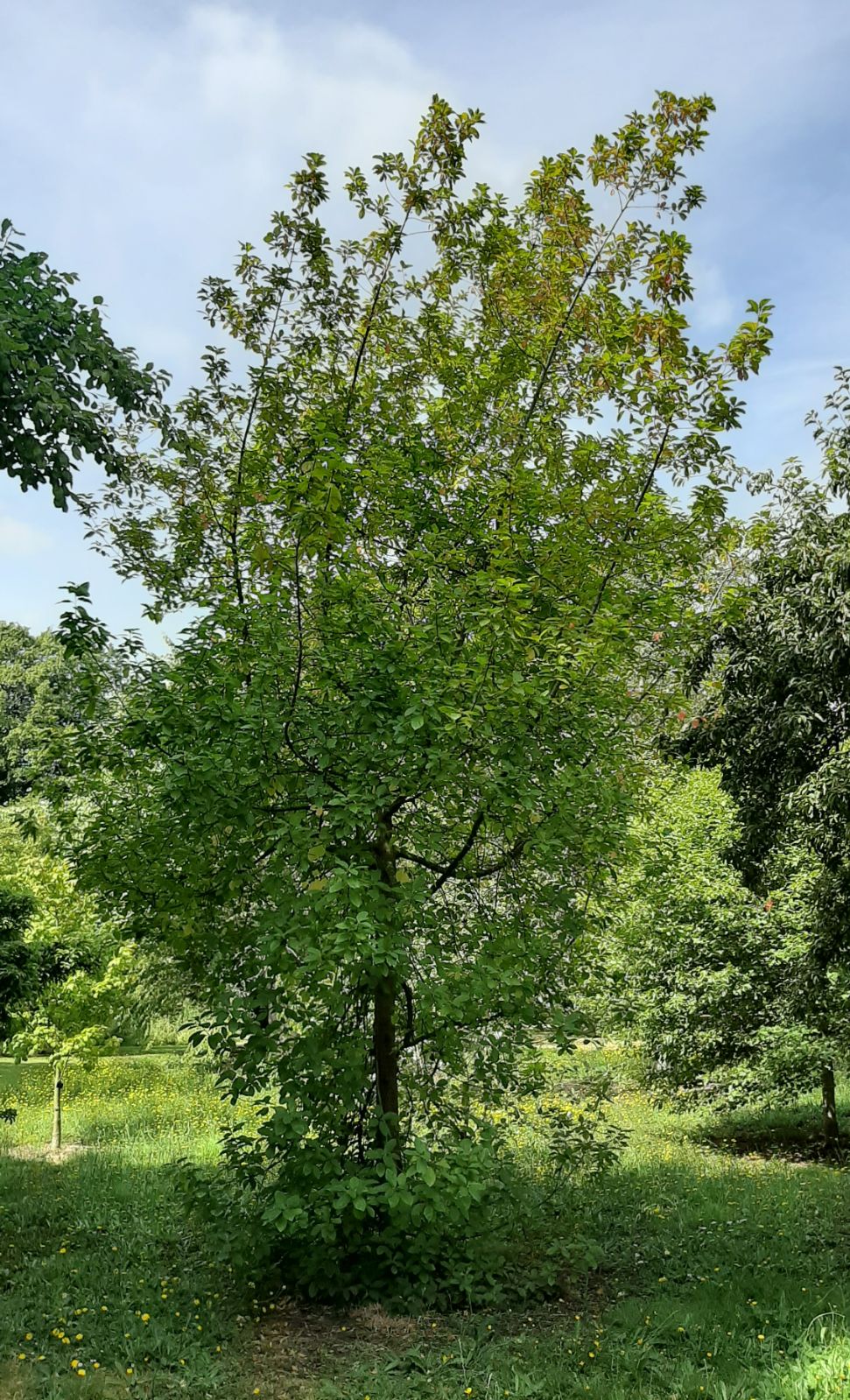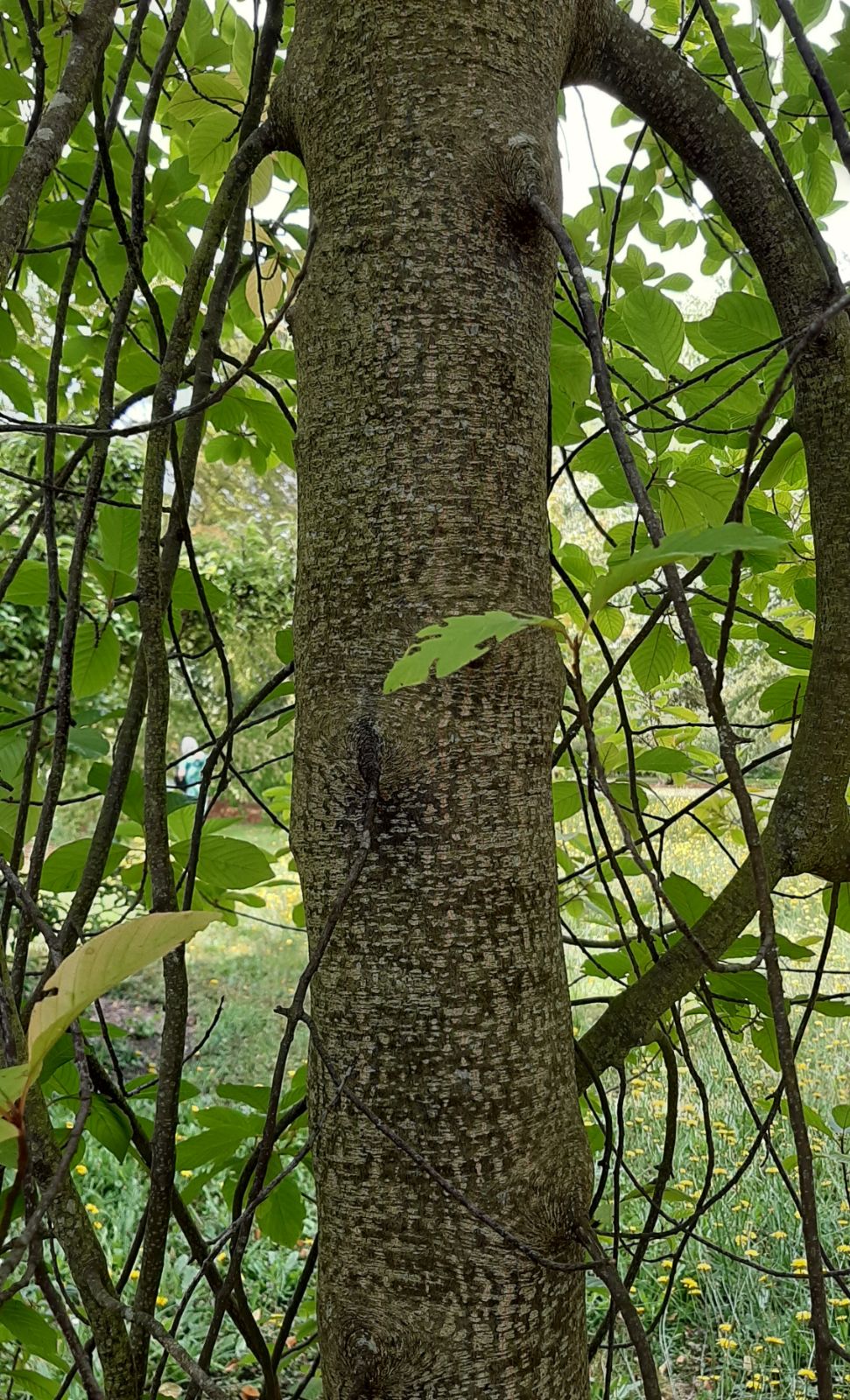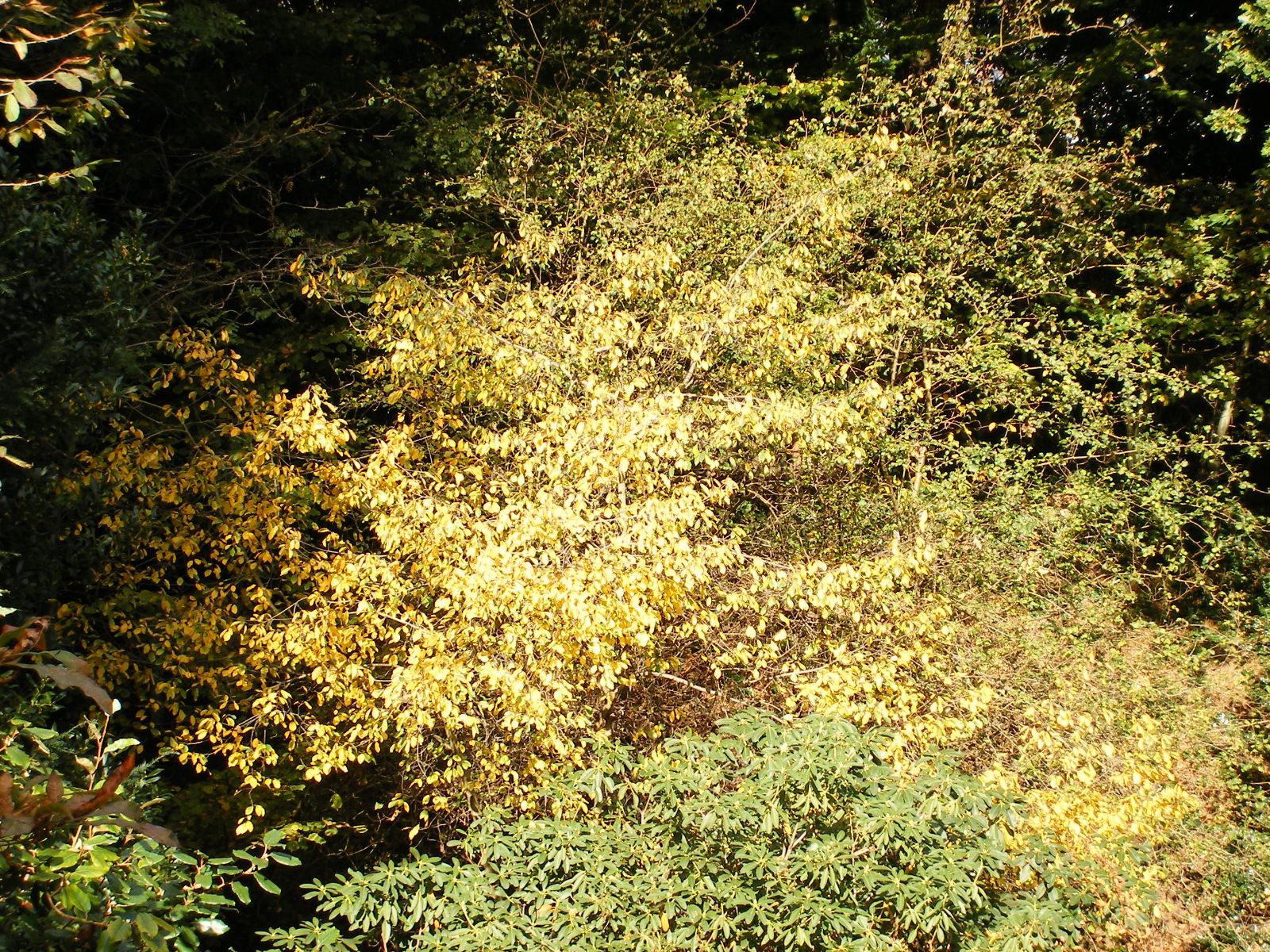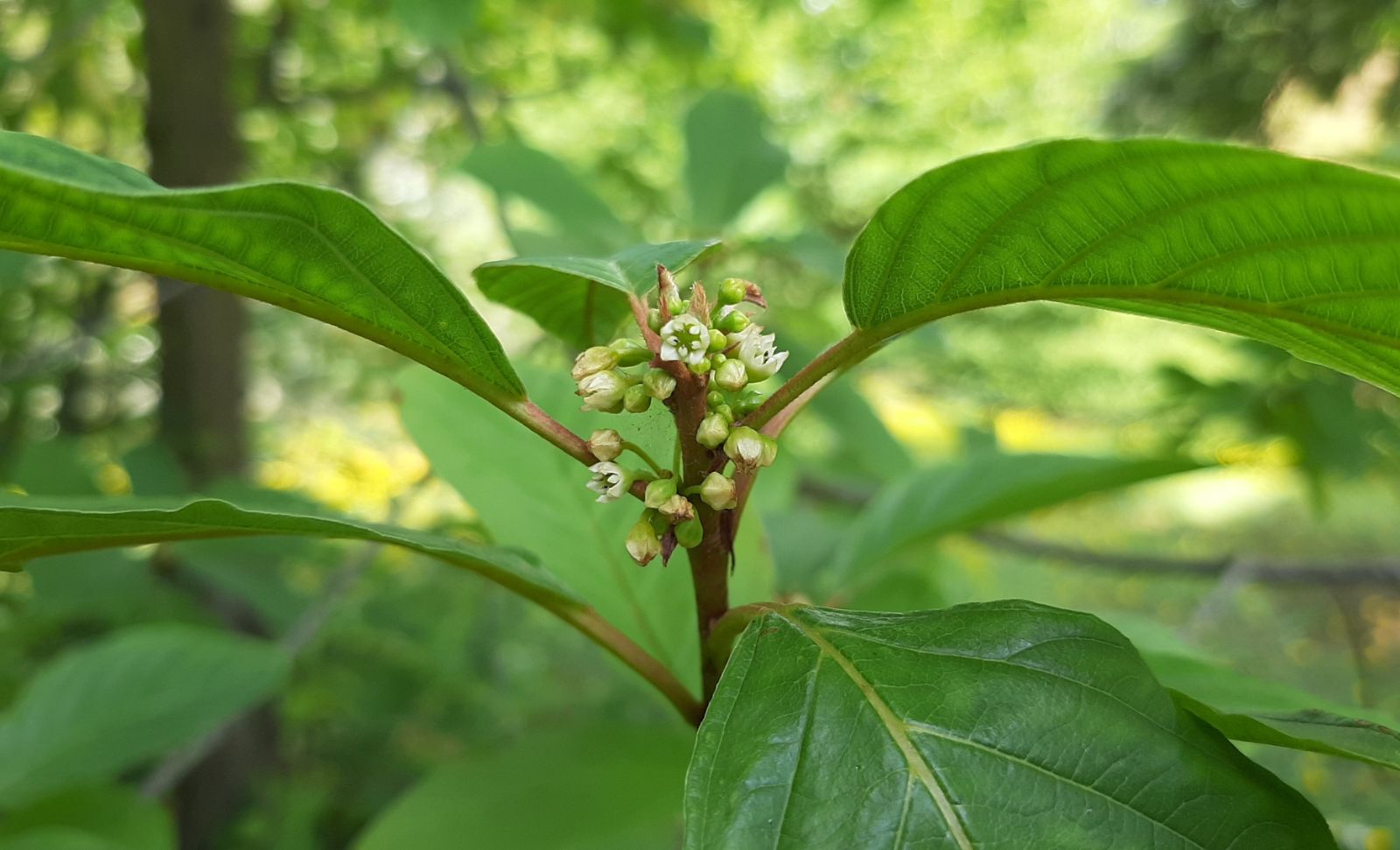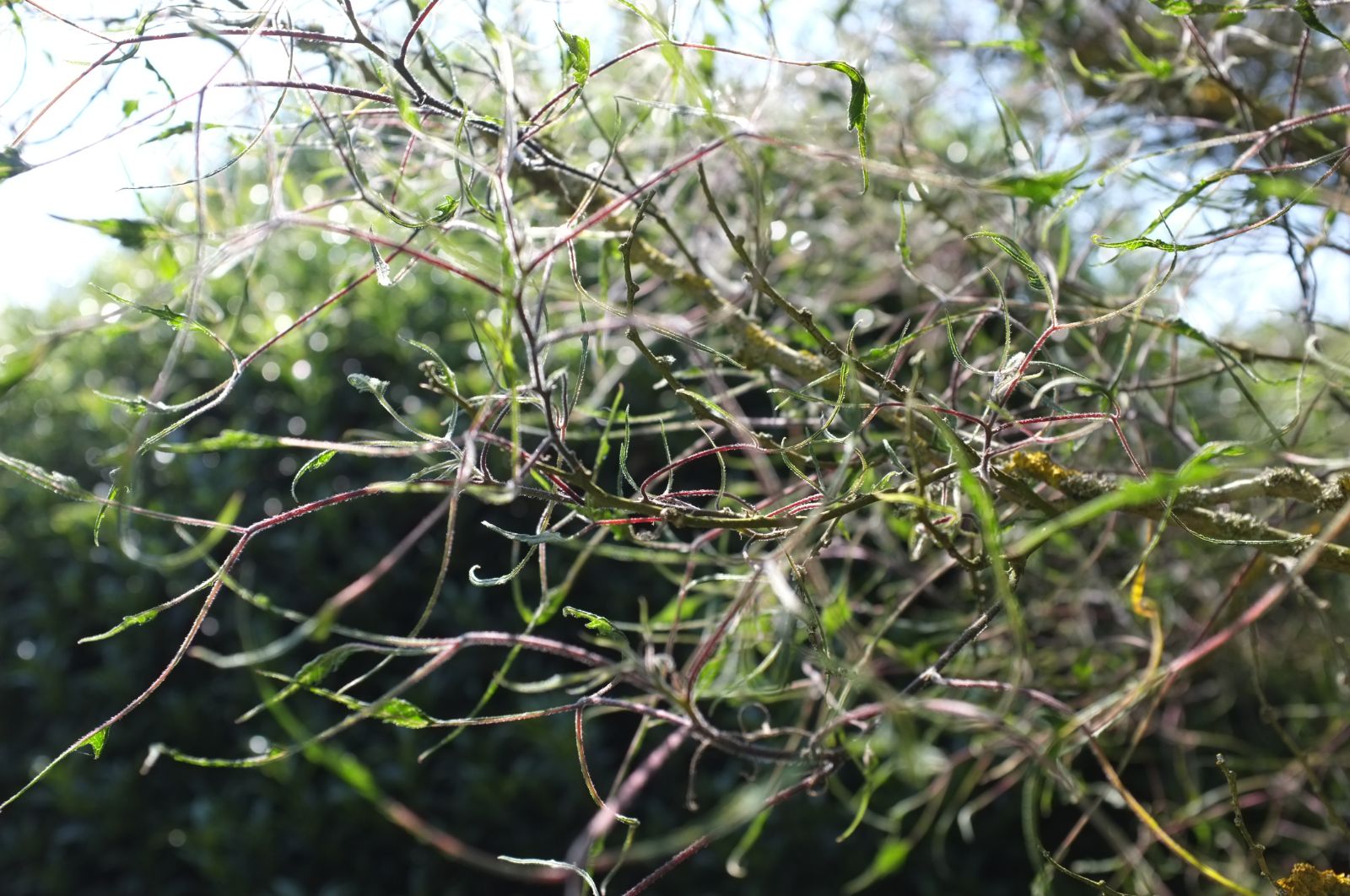Rhamnus frangula
Credits
Article from Bean's Trees and Shrubs Hardy in the British Isles
Recommended citation
'Rhamnus frangula' from the website Trees and Shrubs Online (treesandshrubsonline.
Infraspecifics
Other taxa in genus
- Rhamnus alaternus
- Rhamnus alnifolia
- Rhamnus arguta
- Rhamnus californica
- Rhamnus cathartica
- Rhamnus costata
- Rhamnus davurica
- Rhamnus fallax
- Rhamnus × hybrida
- Rhamnus imeretina
- Rhamnus infectoria
- Rhamnus japonica
- Rhamnus lanceolata
- Rhamnus pumila
- Rhamnus purshiana
- Rhamnus rupestris
- Rhamnus saxatilis
- Rhamnus tinctoria
- Rhamnus utilis
A deciduous shrub or a small tree up to 15 or 18 ft high; young shoots downy. Leaves oval or obovate, 1 to 3 in. long, scarcely half as wide; wedge-shaped or rounded at the base, often with a short abrupt point, not toothed; dark glossy green and glabrous above, paler and often somewhat downy beneath; veins parallel, usually in eight or nine pairs; stalk 1⁄4 to 1⁄2 in. long. Flowers clustered two to ten together in the leaf-axils of the young shoots, bisexual, the parts in fives; calyx and flower-stalk glabrous. Fruits at first changing from green to red, then to dark purple, 1⁄4 in. across, roundish, two-seeded.
R. frangula is widely distributed in western Eurasia and is a native of Britain, though absent from Scotland and the north-west. It is a rather handsome small fruiting tree with foliage of a cheerful green. Under the name of “dogwood” its wood is used (as charcoal) in the manufacture of the finest gunpowders. The bark has purgative properties.
'Asplenifolia'
A remarkable form with leaves as long as in the type, but only from {1/12} to {1/6} in. wide as a rule.
f. angustifolia (Loud.) Schelle
This has narrowly oblong or oblanceolate leaves, from {1/4} to 1 in. wide, the margins uneven or jagged.R latifolia L'Hécrit.
Synonyms
Frangula azorica Tutin

